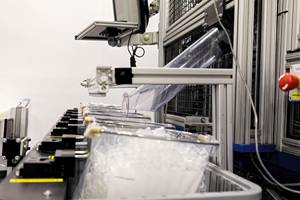More Complexity Adds Costs And Opportunities in Medical
Wood on Plastics
The rapidly rising cost of healthcare will generate demand for products that lower these costs to consumers. There are several ways that plastics can achieve these kinds of savings.
If I ever become famous enough to have a principle of economics named for me in the textbooks (i.e. Wood’s Rule), then I would like it to be this: No problem in economics ever becomes easier to solve by adding more people. This is because people are inherently complex and often unpredictable organisms, and adding more of them to the equation only increases the difficulty of finding a solution...along with raising the cost involved.
Nowhere will this rule prove more true than in the medical industry. As we all know by now, the market for medical products will be significantly affected for the foreseeable future by the Affordable Care Act (ACA or Obamacare). The rich political irony of the ACA is that its name includes the word “affordable,” but the real thrust of the law is to expand access to healthcare—not necessarily make it less expensive.
This is good news for manufacturers of plastics medical products: The rapidly rising cost of healthcare will generate demand for products that lower these costs to consumers. There are several ways that plastics can achieve these kinds of savings, and almost all of the savings will stem from the fact that these products add simplicity to the highly complex problem of keeping Americans healthy.
For instance, one significant method that insurers will utilize to lower healthcare costs is to reduce the amount of time patients spend in the hospital. This means that an increasing amount of inpatient healthcare will shift to home treatment. Many types of medical equipment and supplies will likely be sold directly to consumers through retail outlets in much the same way that prescription drugs are now. This will also spur demand for new, low-cost devices that monitor and communicate medical information between patients at home and doctors in the hospital.
Another way that future costs will be contained is by reusing or recycling medical supplies and equipment. A large percentage of the plastic supplies that are currently sold to healthcare providers are considered disposable. But resin prices are rising, and so are disposal costs. Many plastic products can be redesigned so they can be sterilized and used multiple times or integrated into the recycling stream.
The increased complexity and overall activity levels that stem from integrating all of these new patients/customers into the marketplace for medical products will keep a high premium on new technical innovations. New products will be invented, and improved ways of manufacturing existing products out of cheaper or more durable or lighter-weight materials will be developed.
Ultimately, the very best way to lower healthcare costs is to eliminate the need for them. Because let’s face it, the vast majority of what we have been talking about here are not really healthcare costs but rather “sick care” costs. Products that keep Americans healthy and productive throughout their lives will ultimately prove far less expensive than trying to fund and administer programs that pay for all of their medical care once they reach the age of 65. This is the corollary to Wood’s Rule: Economic problems are easier to solve if you subtract people. Less complexity, lower costs, and a healthier populace—those are the kind of products I want.
WHAT THIS MEANS TO YOU
•Hospitals are becoming increasingly “green,” and some plastics are perceived as less “green” than others (i.e. PVC). So be prepared for some de-selection of certain products.
•Certain aesthetic qualities of medical products (color, texture, etc.) will gain importance as more products are sold directly to consumers.
•The volume of healthcare products shipped to consumers is rising, and this will increasingly affect how they are packaged.
Related Content
As Currier Grows in Medical Consumables, Blow Molding Is Its ‘Foot in the Door’
Currier Plastics has added substantial capacity recently in both injection and blow molding for medical/pharmaceutical products, including several machines to occupy a new, large clean room.
Read MorePlastic Compounding Market to Outpace Metal & Alloy Market Growth
Study shows the plastic compounding process is being used to boost electrical properties and UV resistance while custom compounding is increasingly being used to achieve high-performance in plastic-based goods.
Read MoreAllegheny Performance Plastics to Enter Health Care Sector
The custom molder has secured multiple projects in health care and will be adding cleanroom and white-room spaces, as well as injection molding machines, in support.
Read MoreMedical Manufacturer Innovates with Additive Manufacturing and Extrusion Technology Hubs
Spectrum Plastics Group offers customers two technology hubs — one for extrusion, the other for additive manufacturing — to help bring ground-breaking products to market faster.
Read MoreRead Next
Advanced Recycling: Beyond Pyrolysis
Consumer-product brand owners increasingly see advanced chemical recycling as a necessary complement to mechanical recycling if they are to meet ambitious goals for a circular economy in the next decade. Dozens of technology providers are developing new technologies to overcome the limitations of existing pyrolysis methods and to commercialize various alternative approaches to chemical recycling of plastics.
Read MorePeople 4.0 – How to Get Buy-In from Your Staff for Industry 4.0 Systems
Implementing a production monitoring system as the foundation of a ‘smart factory’ is about integrating people with new technology as much as it is about integrating machines and computers. Here are tips from a company that has gone through the process.
Read MoreLead the Conversation, Change the Conversation
Coverage of single-use plastics can be both misleading and demoralizing. Here are 10 tips for changing the perception of the plastics industry at your company and in your community.
Read More













.png;maxWidth=300;quality=90)







